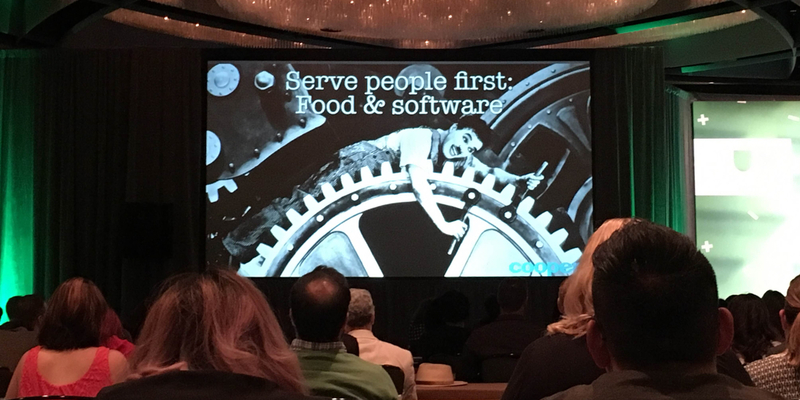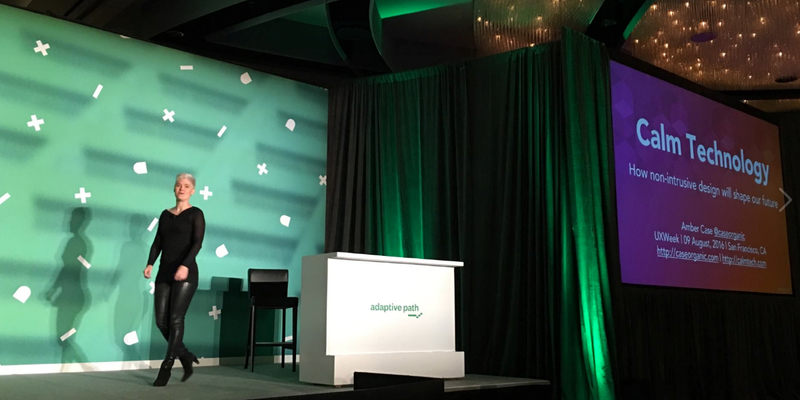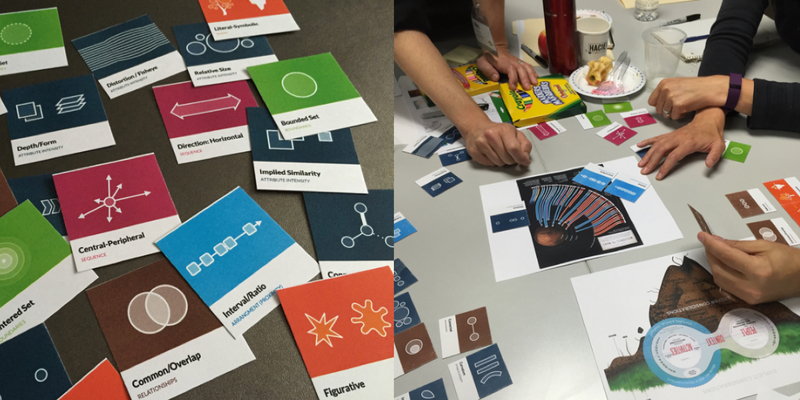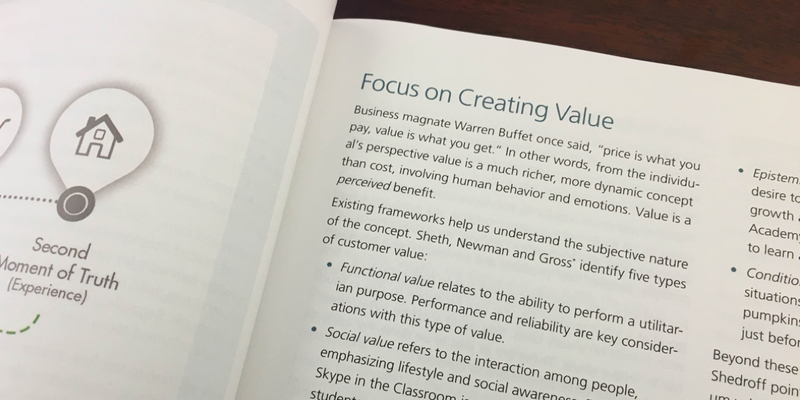Reflecting on UX Week 2016
The Lab Zero Design Team had the opportunity to attend Adaptive Path’s UX Week 2016 conference in San Francisco. The conference brought designers together from all over the world to share diverse perspectives. We met folks from Australia, Canada, Germany, Ireland, and Japan in addition to folks from right here in our hometown.
UX Week 2016 was incredibly inspirational; we highly recommend you check out UX Week 2017. Since we learned a lot, we wanted to share highlights from our experience.
Diverse perspectives
UX Week 2016 featured a killer lineup of thoughtful, progressive designers throughout the four days of workshops and keynotes. We heard from many proud feminists, LGBT folks, a vegetarian, a sex-positive advocate, homeless shelter volunteers, a federal government employee, entrepreneurs, professors, an autism researcher, a food scientist, a board game designer, a single-parent; the list goes on and on. Racial diversity was lacking among the presenters, but a wide range of ages from young to old were represented. One presenter was even barefoot while delivering her keynote.
Workshop and keynote topics ranged from traditional design topics, such as user research, empathy, story mapping, lean design strategy, accessibility, and data visualization, to non-traditional design topics such as indie film production, board game design, autism research, food science, government and nonprofit design work, and more.
Highlights
“It’s not your fault, but it’s your responsibility.” — Alan Cooper
Design legend Alan Cooper talked about responsible craftsmanship, calling for designers and the tech community to prevent the tech industry from becoming corrupt and greedy. He drew on his experiences retiring to a ranch in Marin County to inspire the tech industry to avoid following in the footsteps of other toxic industries such as industrial agriculture. Few speakers talked about developers, so we appreciated his emphasis on “designers and coders working together” to shape the industry in a positive way.
“Don't design anything unless you have an equal female and male perspective” — Cindy Gallop
Britain-based sextech entrepreneur Cindy Gallop talked about the importance of gender equality in the workplace. She encouraged designers to resist working on products or systems that reinforce existing social biases and prejudices, suggesting that we instead all work towards creating a more progressive culture.

Who wore it better?
“Do we do enough to wear our customer’s shoes?” — Katy Mogal
Katy Mogal, head of UX research at Fitbit in San Francisco, talked about the critical need for design empathy and user research. She turned to the inspiring research work of Pattie Moore, shown above, who in the 1970s spent four years dressed up as an 80 year old woman to study elderly people in America. Moore’s immersion took industrial design to new levels by better understanding the elderly and designing products for users with arthritic hands. As much as we love using ergonomic kitchen utensils, we also have Moore to thank for establishing the gold standard for empathy and user research.

Gray used a program called Concepts to sketch alongside of his keynote, as a way to make his keynote on liminal thinking more engaging for visual learners
“You don’t have to believe it’s true to test [a hypothesis], so try it on and see what happens.” — Dave Gray
Consultant and author Dave Gray talked about liminal thinking, the art of finding, creating, and using thresholds to create change. As a designer, Gray offered a framework I found particularly helpful for putting aside one’s preferences or beliefs in order to test new ideas. Gray said “the only way to learn is to test an idea that doesn’t make sense to you,” which completely aligns with the design process of testing a hypothesis in order to validate ideas for users.

Levy took a fun stab at Jesse James Garrett’s definition of experience strategy: “UX + LSD = Experience
“Unvalidated personas are bullshit” — Jaime Levy
Los Angeles-based consultant, professor, and author Jaime Levy called for designers to get involved in customer development to avoid relying on demographic information or personas passed down from marketing. She advocated for designers to follow lean methodology and to go outside and talk to people to validate ideas. Talking to real potential users at coffee shops or on the street is a more effective way to validate value propositions and develop personas. We (sadly) find a lot of designers leaning on demographic information when making personas for their clients; Levy’s workshop was a breath of fresh air. Getting involved in customer development helps us design better products and validate the value proposition for our users.
"I believe good ideas can be contained in easy-to-understand language." — Emileigh Barnes
Emileigh Barnes, a content strategist at 18F in Washington DC, shared civic tech insights from writing content on government websites for children. She discussed the importance of being inclusive, addressing accessibility issues head on (reading levels, language barriers, etc.), and making small and incremental changes over time. From Lab Zero’s perspective, we could not agree more with Barnes for the need to include content strategy first and foremost when designing new products. We were thankful to see content strategy as a recurring theme at UX Week 2016.
“Put humanity and art back into the process.” — Nicole Sorochan
Vancouver-based filmmaker and design agency founder, Nicole Sorochan, talked about creating a documentary and motion comic called “Amplify Her.” She discussed the process of producing a female-centric documentary and the benefits of creating a safe space. We always find it interesting to look outside of traditional product design to learn about the creative process and were grateful that Sorochan shared stories from her perspective as a feminist filmmaker and designer.
“‘Disrupt’ is a curious term. No one wants to be disrupted. I prefer gradual change.” — Amber Case
Amber Case, Portland-based anthropologist and cyborg enthusiast, talked about “Calm Tech” and the need for an era of non-disruptive “invisible” technology. She shared her early research on insulin pumps designed for Type 1 diabetes patients. Apparently, early insulin pumps made a loud “beep” when a user needed more insulin. Something so personal should not be screamed to the public. We had never heard of “calm tech” before until Case’s keynote; it might just be our new favorite design movement.
The visual display of information workshop
Designer Stephen Anderson led a workshop about visual encodings and spatial arrangements. He shared a visual thinking toolkit (shown above) to teach the class how to make sense of complex ideas. Who knew data visualization could be so fun? We particularly loved that Anderson built in time for the workshop participants to stand up, stretch, and walk around the workshop to view other participants’ work. It was a fun, safe way to showcase work and learn from others.
“We use mapping to show the exchange of value.” — Jim Kalbach
Designer and author Jim Kalbach taught a workshop about mapping experiences as a way to show the exchange of value between individuals and organizations. We found it particularly helpful that he shared a framework for getting started with any mapping task, something we do quite often for our clients.
“How do we design for people with Autism?” — Steve Silberman
Author Steve Silberman called for designers to consider other perspectives and to think more about accessibility for people with autism. Our society invests millions of dollars to study autism, but Silberman pointed out that we have not invested enough in designing for people with autism. A few years ago, Lab Zero designed and built an app in partnership with Autistry Studios to help people with Autism Spectrum Disorder transition to independence and develop better executive function skills. To learn more about this work, please don’t hesitate to reach out.
UX Week 2016 leaned on people outside of traditional design roles for inspiration
Gwendolyn Graff, food scientist at Wrigley Co., put together a taste experience for the conference to enjoy. Fun fact: It turns out that every taste bud on the tongue has the ability to taste all five core tastes: sweet, sour, salt, bitter, and umami. Creating a non-visual experience mixed things up at UX Week 2016 in a fun and clever way.
Affirming the value of design
Adaptive Path cofounders Peter Merholz and Jesse James Garrett closed the conference by proclaiming that “the value designers bring is our diverse perspectives.” As designers, we know part of our role is to “advocate for the user,” but Merholz and Garrett challenged the notion that “empathy is just a matter of training designers to be empathetic.” After all, how can you design for someone other than yourself? By tapping our unique perspectives, we have the potential to “bring the weird” to our teams.
UX Week 2016 reminded us of the importance to “walk a mile in our user’s shoes.” The conference encouraged us to be open to new perspectives, to seek new experiences, to embrace radical inclusivity in the creative process, and to try on strange, uncomfortable beliefs.
Thanks for checking out our highlights from UX Week 2016. Feeling refreshed and energized, the Lab Zero design squad looks forward to sharing these new perspectives and lessons with the rest of the team.

Greetings from the Lab Zero team at UX Week 2016. Shown left to right, Clayton Hopkins, Stacy Suits, and Tracey Thompson.
Continue the conversation.
Lab Zero is a San Francisco-based product team helping startups and Fortune 100 companies build flexible, modern, and secure solutions.









